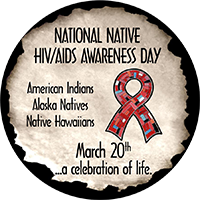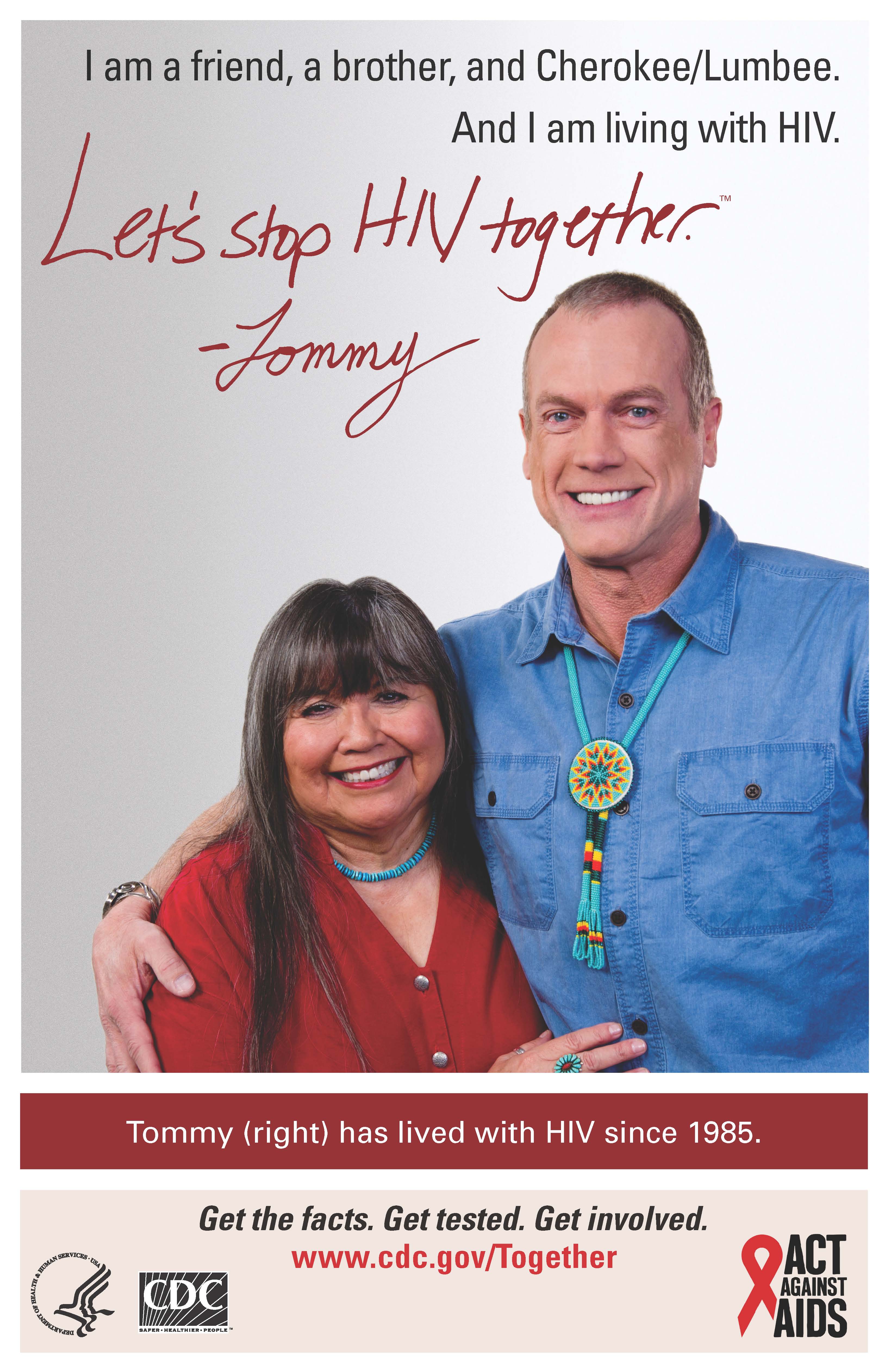 Every year March 20th is designated as National Native HIV/AIDS Awareness Day. As the US Department of Health and Human Services states, the day is “a time to recognize the impact of HIV/AIDS on American Indians, Alaska Natives, and Native Hawaiians.” (1)
Every year March 20th is designated as National Native HIV/AIDS Awareness Day. As the US Department of Health and Human Services states, the day is “a time to recognize the impact of HIV/AIDS on American Indians, Alaska Natives, and Native Hawaiians.” (1)
HIV/AIDS
As HIV.org provides, “HIV is a virus spread through certain body fluids that attacks the body’s immune system, specifically the CD4 cells…Over time, HIV can destroy so many of these cells that the body can’t fight off infections and disease…Opportunistic infections or cancers take advantage of a very weak immune system and signal that the person has AIDS.” (2)

Natives and HIV/AIDS
From 2010 to 2015 over 1,000 American Indian and Alaska Natives were diagnosed with HIV infection, over 580 were diagnosed with AIDS, and over 300 died that had been diagnosed with HIV infection. Since the HIV/AIDS epidemic began up until 2015 there have been over 3,500 AIDS diagnoses in AI/AN populations. If these statistics were not alarming enough, the study also shows that after being diagnosed with HIV infection, AI/ANs had the lowest survival rates out of all minority groups. (3)
Unfortunately, the vast cultural diversity amongst tribes, poverty, stigmas related to gay relationships and HIV, mental health care barriers, rates of alcohol and drug abuse, and STDs have all created significant obstacles in addressing HIV and AIDS prevention and treatment in Native communities. But, “Native communities are working to overcome these barriers by increasing HIV/AIDS awareness, encouraging HIV testing, and promoting entry into medical care. CDC is working with communities to share stories, build awareness, and reduce the toll of HIV.” (4)
Elders and HIV/AIDS
Although the focus of the awareness day is on Natives and HIV/AIDS, we also would like to address the Elder population and HIV/AIDS. As the CDC states, people “aged 50 and over account for an estimated 45% of Americans living with diagnosed HIV,” however, they are often an overlooked demographic. (5)
The CDC states that people 50 and older have the same risk factors as everyone else, as many Elders are sexually active, but often they are not aware or assume that they are not at risk. However, just like everyone else Elders are at risk for contracting the disease. In addition, Elders also have unique issues that they may face:
- Elders that are widowed or divorced are dating again, and may be less aware of their risks of HIV and may be less likely to protect themselves
- Because getting pregnant may no longer be an issue for Elder women, they may be less likely to practice safe sex, plus there is an increased chance of HIV infection due to vaginal tissue thinning and dryness
- Elders are less likely to discuss sex or drug use with doctors and get tested, and doctors are less likely to ask or provide testing as well (5)
What You Can Do
The “CDC recommends that all adults and adolescents get tested for HIV at least once as a routine part of medical care while those at increased risk should get an HIV test at least every year. HIV testing is vital and sexually active gay and bisexual men might benefit from HIV testing every 3 to 6 months.” (4) Some additional suggestions about actions steps you can take to raise awareness include:
- Talk with your health care provider about your risks for HIV/AIDS
- Talk with family and friends about HIV/AIDS, including prevention and the impact on your community
- Provide support to people living with HIV/AIDS
- Ask community leaders to address the HIV/AIDS epidemic
- Get involved with or host an event
- Visit websites online to provide more information on HIV/AIDS, including HIV.gov, as well as, the CDC website at cdc.gov/features/nativehivaids (6)
Sources
- U.S. Department of Health & Human Services. (n.d.). National Native HIV/AIDS Awareness Day March 20, 2018. Retrieved March 19, 2018, from https://aidsinfo.nih.gov/understanding-hiv-aids/hiv-aids-awareness-days/150/national-native-hiv-aids-awareness-day
- HIV.gov. (2018, February 21). What Are HIV and AIDS? Retrieved March 19, 2018, from https://www.hiv.gov/hiv-basics/overview/about-hiv-and-aids/what-are-hiv-and-aids
- Centers for Disease Control and Prevention. HIV Surveillance Report, 2015; vol. 27. http://www.cdc.gov/hiv/library/reports/hiv-surveillance.html. Published November 2016. Accessed March 19, 2018.
- Centers for Disease Control and Prevention. (2017, March 20). National Native HIV/AIDS Awareness Day. Retrieved March 19, 2018, from https://www.cdc.gov/features/nativehivaids/
- Centers for Disease Control and Prevention. (2018, February 12). HIV Among People Aged 50 and Over. Retrieved March 19, 2018, from https://www.cdc.gov/hiv/group/age/olderamericans/index.html
- HIV.gov. (2017, June 24). Event Planning Guide. Retrieved March 19, 2018, from https://www.hiv.gov/events/awareness-days/event-planning-guide
Thank you so much
You are welcome!
Hi, I find the blog informative, though… nice work… do share such information. I’ll bookmark your website.It was such a wonderful and useful article about the HIV infection. It is a must-readable blog to know the brief details of HIV infection.This information is so helpful for me.